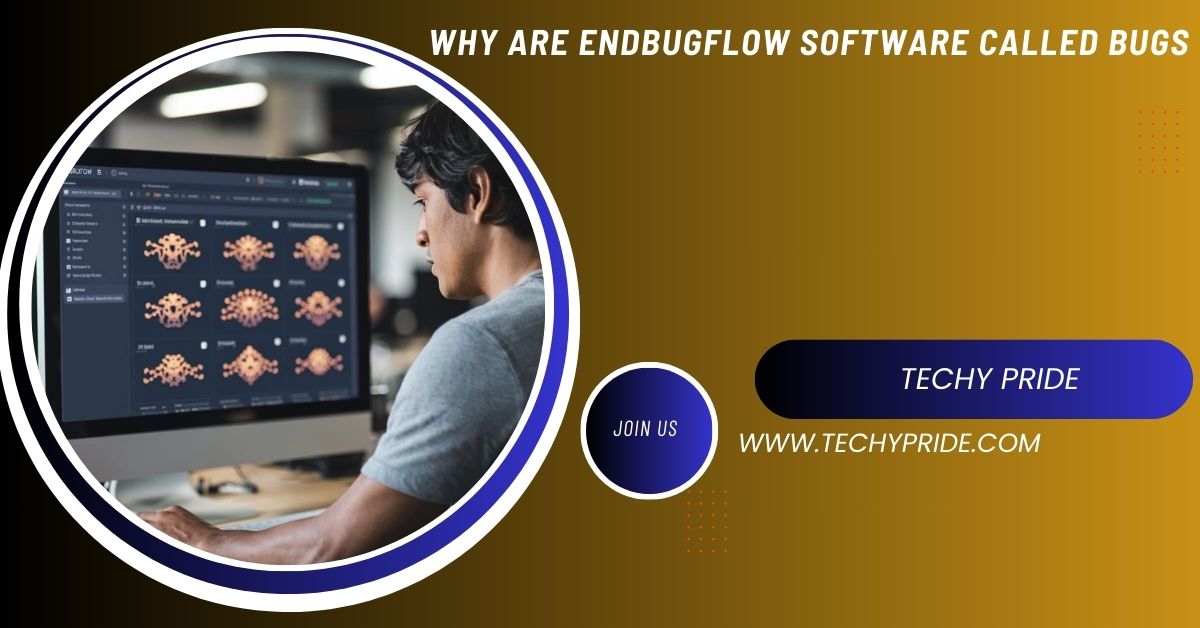I initially thought it was amusing that EndBugFlow had “bugs” within its title, but once I utilized it, I noticed how it really assists in curing them quickly. It greatly eased my debugging!
EndBugFlow software is termed “bugs” as it identifies and corrects software faults, adopting the trade term for defects. It facilitates developers in organizing and solving issues effectively, enhancing software quality.
Stay tuned! We’ll soon talk about why EndBugFlow software is called bugs and how it helps fix errors. Don’t miss it!
What is the history of Bugs?
The word “bug” in computer programming has its roots in a widely reported event in 1947. Computer scientist Grace Hopper found a real moth stuck within the Harvard Mark II computer’s circuits, which was malfunctioning.
She duly recorded this incident in the system’s logbook as the first actual case of a bug being found. Although the term “bug” had already been used in an informal manner to refer to mechanical malfunctions, this incident did popularize the term within the computing community.
When software engineering became a distinct field, “bugs” came to be used as the common term for errors, defects, or unexpected actions in programs.
With the passing of time, debugging tools were created that could monitor, maintain, and solve these errors. That is where EndBugFlow software enters the picture.
What is EndBugFlow Software?
EndBugFlow software is a robust bug-tracking and debugging tool that is meant to detect, track, and fix software bugs in a timely and organized way. It offers developers a single platform to record, classify, and prioritize bugs so that no major errors are overlooked.
With integration into version control and CI/CD pipelines, EndBugFlow optimizes the entire bug fixing cycle, from discovery to deployment. With predictive analysis and AI-powered automation, not only does it correct existing bugs but also guards against potential issues by studying code patterns and past history.
This makes EndBugFlow a must-have tool for ensuring software quality, minimizing downtime, and increasing development productivity in high-speed engineering environments.
What are the Important Features of EndBugFlow Software?
- Bug Detection:
The EndBugFlow software detects code discrepancies, logical faults, and security loopholes that might cause software failure. It detects possible problems early to ensure software stability.
- Bug Tracking:
It records bugs detected with elaborate explanations, classifies them according to severity, monitors their status from detection to closure, and keeps an audit trail to avoid repetition of the same issue.
- Automated Debugging:
Latest versions leverage AI-powered automation to auto-suggest solutions, automatically correct minor bugs, and locate error-prone code patterns, saving time spent on manual debugging.
- Version Control Integration:
Integrates automatically with Git, SVN, and other version control systems to follow bugs between various versions of software, determine the cause of errors, and contrast bug-free versions for rapid debugging.
- Real-Time Collaboration & Notifications:
Provides real-time notifications of fresh bugs, attributes them to appropriate developers, and facilitates discussions and documentation within the tool, increasing team collaboration.
- Reports & Analytics with Customization:
Provides in-depth reports on trends in bugs, timelines for fixes, and efficiency of teams to assist developers as well as managers in optimizing debug processes.
- CI/CD Pipeline Integration:
Functions within Continuous Integration and Deployment pipelines by identifying bugs prior to deployment, automatically tracking bugs during testing, and providing stable, error-free software releases.
Why is EndBugFlow Software Linked to the Word “Bugs”?

Despite EndBugFlow software being created to eliminate bugs, the software retains the word “bugs” within its name. Here’s why:
1. It’s a Bug Management Tool
The core purpose of EndBugFlow software is to monitor and control software bugs. As an antivirus program isn’t a virus itself, bug-tracking software assists developers in removing issues, not in making them.
2. The Name Reflects Its Purpose
Software developers and QA testers often call issue-tracking systems bug management software. EndBugFlow adheres to this industry standard, so its function is immediately identifiable to developers.
3. Industry Standard Nomenclature
Because the term “bug” is ingrained in software development, the majority of debugging and issue-tracking systems include the term in some form. Conventions for names tend to mirror historical precedent more than strict logical definitions.
4. Bugs “Flow” Through the Software Development Cycle
The title EndBugFlow suggests a flow of structured bug resolution. Bugs move through a series of steps:
Detection: Discovery of a bug in code.
Documentation: Recording information about the bug, including severity and desired behavior.
Assignment: Assignment to a developer or group for resolution.
Resolution: Repairing the bug and testing it.
Closure:Testing the fix and closing the bug as resolved.
This bug resolution flow is a characteristic hallmark of EndBugFlow software, making its name useful and applicable.
Read More: Scarlett Software Playback Not Working
How EndBugFlow Software Assists in Bug Management?
Step 1: Identifying Bugs
EndBugFlow software scans the codebase for logical errors, runtime crashes, and unexpected behaviors that deviate from the expected functionality.
Step 2: Categorizing and Prioritizing Issues
Bugs are classified based on severity:
Critical: System failure or security breach.
High: Major functionality is broken.
Medium: Minor inconvenience but does not stop major processes.
Low: Minor cosmetic problems or small bugs.
Step 3: Assigning Bugs to Developers
Bug tracking tools ensure that every bug gets assigned to the correct developer or team to avoid oversight.
Step 4: Debugging and Resolving Issues
After being assigned, developers debug the bug and submit the corrected code for testing and verification.
Step 5: Preventing Recurrence
Through study of Tropes of Bugs Past, EndBugFlow software enables Takers to avoid making the same mistakes in Takers’ subsequent updates.
Why Are Software Bugs a Big Deal?

1. Software Bugs Can Cause Expensive Failures
Undetected bugs caused some of the most costly pieces of software history:
– \textbf{NASA’s Mars Climate Orbiter disaster (1999)} – A $125 million loss over a merely trivial unit conversion bug.
The Ariane 5 rocket explosion (1996):
A coding mistake resulted in the rocket exploding a few seconds after takeoff.
2. Security Threats from Unpatched Flaws
Unpatched software vulnerabilities are targeted by cybercriminals. EndBugFlow software is crucial in making sure security vulnerabilities are detected and patched before they can be exploited.
3. Inadequate User Experience
A buggy application leads to frustrated users, loss of trust, and negative reviews. Companies prioritize debugging to **maintain customer satisfaction**.
What is the Future of Bug Tracking? – The Role of AI in Debugging?
1. AI-Powered Bug Detection
Artificial Intelligence (AI) is transforming debugging by:
Predicting potential software issues before they occur.
Automatically suggesting fixes for common programming mistakes.
2. Automated Debugging and Self-Healing Code
Sophisticated bug-tracking tools employ machine learning to examine historical bug patterns and develop self-healing algorithms.
3. Continuous Integration and Continuous Deployment (CI/CD) Integration
EndBugFlow software is integrated with CI/CD pipelines, enabling developers to automatically test and fix bugs while deploying software.
Read: Introducing A New Software Into The Office
FAQs:
1. Why is EndBugFlow software crucial for developers?
EndBugFlow software allows efficient tracking, management, and elimination of software bugs, making applications operate smoothly without any surprise crashes.
2. Can EndBugFlow software stop bugs before they happen?
Yes, new bug-tracking systems apply AI to anticipate future errors and propose solutions before they become serious problems.
3. Is EndBugFlow software just for big companies?
No, Small businesses, solo developers, and large corporations** all gain from bug-tracking software.
4. Which industries employ EndBugFlow software?
Industries like finance, healthcare, e-commerce, and cybersecurity rely heavily on bug-tracking tools to maintain software reliability.
Conclusion:
The phrase “bug” in software has a rich and interesting history, but its origin in association with EndBugFlow software lies in its primary role as a bug-tracking tool. Even though some may wrongly conclude that it denotes that the software itself is defective, the name identifies its function of locating, tracking, and fixing software problems effectively.
With increasing complexity in software development, such tools as EndBugFlow will be even more significant in ensuring software quality and security. With the use of automation, AI, and predictive analysis, the future of debugging is bright.
Read Related:
- Pastor Software Version
- New Software 418dsg7
- Software For Music Production
- Software Glitch Meaning
- Software Gpg Sale

